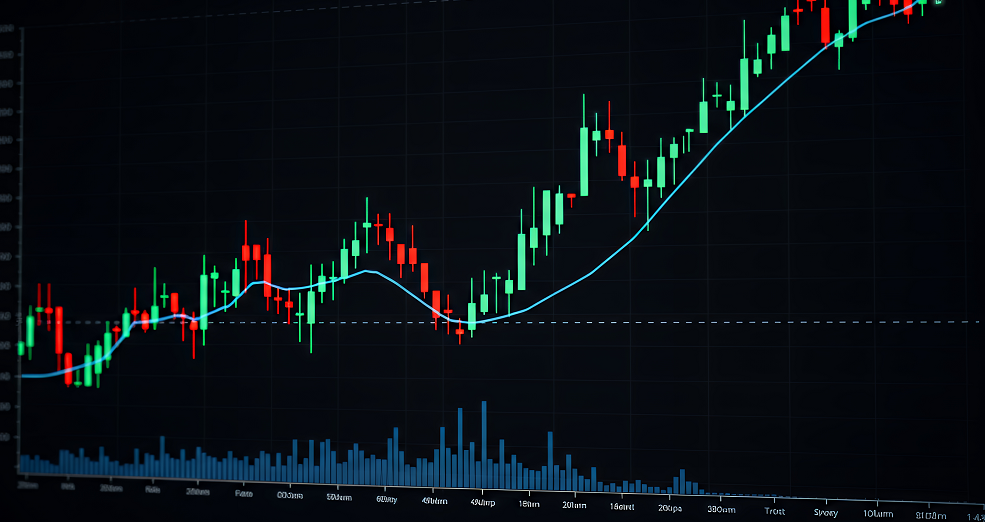IC Markets – Asia Fundamental Forecast | 29 October 2025
What happened in the U.S. session?
Strong corporate earnings and expectations for easier Fed policy propelled U.S. equities and technology stocks to new highs overnight. Fixed income saw yields decline in anticipation of rate cuts, while gold prices fell sharply as risk appetite increased. The macroeconomic backdrop remained clouded by reduced consumer confidence and labor-market caution, but optimism around AI and dovish central bank action dominated market sentiment. Data scarcity because of the government shutdown meant traders relied on private releases and forward guidance more heavily than usual.
What does it mean for the Asia Session?
Wednesday’s Asian session is likely to be dominated by pre-positioning and volatility around high-impact CPI and central bank releases, with particular attention to AUD, CAD, NZD, and USD pairs. Traders are urged to watch for shifts in rate expectations, central bank rhetoric, and themes of risk-on/risk-off sentiment as global markets continue to react to monetary policy divergence and evolving geopolitical headlines.
The Dollar Index (DXY)
Key news events today
Federal funds rate (6:00 pm GMT)
FOMC statement (6:00 pm GMT)
FOMC Press Conference (6:30 pm GMT)
What can we expect from DXY today?
The US Dollar is under pressure today as traders focus on the Fed’s policy direction. The anticipated rate cut reflects concerns over job growth and muted inflation, with economic uncertainty amplified by delays in official US data due to the federal shutdown. Investors are bracing for volatility following the FOMC announcement and the press conference, which will set the tone for the dollar and global markets in the coming weeks.
Central Bank Notes:
- The Federal Open Market Committee (FOMC) voted, by majority, to lower the federal funds rate target range by 25 basis points to 3.75%–4.00% at its October 28–29, 2025, meeting, marking the second consecutive cut following the 25 basis points reduction in September.
- The Committee maintained its long-term objectives of maximum employment and 2% inflation, noting that the labor market continues to soften, with modest job creation and an unemployment rate edging higher. In comparison, inflation remains above target at around 3.0%.
- Policymakers highlighted ongoing downside risks to economic growth, tempered by signs of resilient economic activity. September’s consumer price index (CPI) came in slightly lower than expected at 3.0% year-over-year, easing inflation pressure but still warranting vigilance given tariff-driven price effects.
- Economic activity expanded modestly in the third quarter, with GDP growth estimates around 1.0% annualized; however, uncertainty remains elevated amid persistent global trade tensions and the U.S. government shutdown, which is impacting data availability.
- The updated Summary of Economic Projections reflects an anticipated unemployment rate averaging approximately 4.5% for 2025, with headline and core personal consumption expenditures (PCE) inflation projections holding near 3.0%, indicating a slow easing path ahead.
- The Committee emphasized its flexible, data-dependent approach and underscored that future policy adjustments will be guided by incoming labor market and inflation data. As in prior meetings, there was dissent, including one member advocating a more aggressive 50-basis-point cut.
- The FOMC announced the planned conclusion of its balance sheet reduction (quantitative tightening) program, intending to cease runoff in the near term to maintain market stability, with Treasury redemption caps held steady at $5 billion per month and agency mortgage-backed securities caps at $35 billion.
- The next meeting is scheduled for 9 to 10 December 2025.
Next 24 Hours Bias
Weak Bearish
Gold (XAU)
Key news events today
Federal funds rate (6:00 pm GMT)
FOMC statement (6:00 pm GMT)
FOMC Press Conference (6:30 pm GMT)
What can we expect from Gold today?
Gold prices declined sharply at the start of this week and have faced heightened volatility, with spot prices testing the $3,945–$3,965 support zone after plunging below $4,000 due to improved risk sentiment, profit-taking, and optimism over a potential US–China trade deal. A recent rally saw gold reach an all-time high of $4,381.58, but prices have since corrected more than 7% within a week, currently hovering around $3,950–$4,010 as the market awaits the US Fed’s policy decision on October 29, which could trigger further moves depending on interest rate guidance.
Next 24 Hours Bias
Medium Bearish
The Australian Dollar (AUD)
Key news events today
CPI q/q (12:30 am GMT)
CPI y/y (12:30 am GMT)
Trimmed mean CPI q/q (12:30 am GMT)
What can we expect from AUD today?
The Australian Dollar staged a modest rally following stronger-than-expected inflation data, buoyed by external optimism and technical resilience, but remains in a watchful holding pattern ahead of further policy signals. The market sees the recent upside CPI surprise as supportive for the AUD in the near term, easing fears of further rate cuts by the RBA.The AUD remains sensitive to global risk appetite, especially developments in US-China trade relations and upcoming central bank meetings in the US and Australia.
Central Bank Notes:
- The RBA held its cash rate steady at 3.60% at its October meeting on 29–30 September 2025, marking a second consecutive pause after August’s 25 basis point cut. The move affirms the Bank’s data-dependent approach as inflation trends within the target range.
- Inflation indicators remained stable through September, with headline CPI likely anchoring near 2.2%—comfortably within the 2–3% band. Insurance and housing costs remain sticky but are increasingly offset by moderation in discretionary goods.
- Trimmed mean inflation is estimated at around 2.8%, signaling underlying pressures remain contained. The Board continues to flag food and energy price volatility as short-term risks, though the broader disinflation narrative holds.
- Global conditions remain a source of uncertainty. U.S. policy expectations and uneven growth in China continue to weigh on commodities, even as trade disruptions have eased marginally since mid-year.
- Domestic growth shows resilience in the housing and services sectors, though manufacturing remains subdued. Household incomes have stabilized, but consumption remains only modest, capped by high borrowing costs.
- The labor market maintains relative tightness, though job growth has slowed notably since the first half of the year. Underutilization has ticked higher, but overall employment conditions remain supportive.
- Wage growth is plateauing, reflecting softer labor demand. Weak productivity continues to keep unit labor costs elevated, underscoring a medium-term concern highlighted repeatedly by the RBA.
- Household consumption prospects remain fragile. The combination of high rents and weak discretionary appetite suggests risks of a consumer-led slowdown in Q4 if confidence fails to rebound.
- The Board reiterated that subdued household spending poses risks to business sentiment and may dampen investment and job creation in the coming quarters.
- Monetary policy remains mildly restrictive. The RBA balanced confidence in inflation progress with caution around global and domestic demand risks, keeping further adjustments conditional on incoming data.
- The Bank reaffirmed its dual commitment to price stability and full employment, noting its readiness to act should conditions shift markedly.
- The next meeting is on 5 to 6 November 2025.
Next 24 Hours Bias
Medium Bullish
The Kiwi Dollar (NZD)
Key news events today
RBNZ Gov Hawkesby Speaks (3:30 am GMT)
What can we expect from NZD today?
The New Zealand Dollar (NZD) showed moderate gains against the US Dollar on October 29, 2025, supported by easing US-China trade tensions and a modest uptick in market sentiment, tempered by recent dovish monetary signals from the Reserve Bank of New Zealand (RBNZ). The NZD/USD pair exhibited a slight upward momentum, trading around 0.5760–0.5780, but major resistance at 0.5800 remained intact.
Central Bank Notes:
- The Monetary Policy Committee (MPC) agreed to cut the Official Cash Rate (OCR) by 50 basis points to 2.50% on 8 October 2025, exceeding market expectations for a smaller 25-basis-point reduction and signaling a stronger commitment to reviving growth.
- The decision was reached by consensus, marking a shift from previous split votes, and reflected policymakers’ shared view that sustained economic weakness and persistent disinflationary pressures required a more front-loaded policy response.
- Annual consumer price inflation stood at 2.7% in the June quarter and is seen nearing 3% for the September quarter—above the 2% midpoint but within the 1–3% target range. Despite high near-term readings, the MPC projects inflation will return toward 2% by the first half of 2026 as spare capacity and moderating tradables curb price momentum.
- Policymakers acknowledged that domestic demand remains weak, with household spending, business investment, and construction activity under pressure. While still elevated, services inflation is expected to ease gradually as wage growth slows and unemployment edges higher.
- Financial conditions have eased with expectations as wholesale and retail borrowing rates adjust to lower policy settings. Bank lending data indicate a modest uptick in mortgage approvals, though broader credit demand remains subdued.
- GDP growth stalled in the middle of 2025, with high-frequency indicators showing continued weakness into the third quarter. A combination of elevated costs for essentials and falling savings continues to restrain household consumption, while global trade frictions weigh on business sentiment.
- The MPC noted that global uncertainty—particularly from US trade regulation changes and soft Chinese demand—continues to pose downside risks to export sectors, though these are partly offset by a weaker New Zealand dollar improving competitiveness.
- Subject to data confirming a sustained soft patch in activity and moderating inflation pressures, the MPC signaled further scope to reduce the OCR toward 2.25% at its next meeting on 26 November 2025, consistent with current market and Westpac forecasts.
- The next meeting is on 26 November 2025.
Next 24 Hours Bias
Weak Bullish
The Japanese Yen (JPY)
Key news events today
No major news event
What can we expect from JPY today?
On October 29, 2025, the Japanese Yen is rebounding on intervention fears and speculation about Bank of Japan policy. Markets expect rates to remain steady, but forward guidance and economic projections could set the tone for Yen moves into the year-end. Fiscal stimulus under PM Takaichi and persistent inflation are key drivers, with traders closely watching upcoming BOJ decisions and statements for clues about future tightening.
Central Bank Notes:
- The Policy Board of the Bank of Japan decided on 17 September, by a unanimous vote, to set the following guidelines for money market operations for the inter-meeting period:
- The Bank will encourage the uncollateralized overnight call rate to remain at around 0.5%.
- The BOJ will continue its gradual reduction of monthly outright purchases of Japanese Government Bonds (JGBs). The scheduled amount of long-term government bond purchases remains unchanged from the prior decision, with a quarterly reduction pace of about ¥400 billion through March 2026 and about ¥200 billion per quarter from April to June 2026 onward, aiming for a purchase level near ¥2 trillion in January to March 2027.
- Japan’s economy continues to show a moderate recovery, with household consumption supported by rising incomes, although corporate activity has softened somewhat. Overseas economies remain on a moderate growth path, with the impact of global trade policies still weighing on Japan’s export and industrial production outlook.
- On the price front, the year-on-year rate of change in consumer prices (excluding fresh food) remains in the mid-3% range. Inflationary pressures remain broad-based, with persistent cost-push factors in food and energy, alongside solid wage pass-through. However, input cost pressures from past import surges are showing early signs of easing.
- Short-term inflation momentum may moderate as cost-push effects diminish, though rent increases and service-related price gains tied to labor shortages are likely to provide support. Inflation expectations among firms and households continue a gradual upward drift.
- Looking ahead, the economy is projected to grow at a slower-than-trend pace in the near term due to external demand softness and cautious corporate investment plans. However, accommodative financial conditions and steady increases in real labor income are expected to underpin domestic demand.
- In the medium term, as overseas economies recover and global trade stabilizes, Japan’s growth potential is likely to improve. With persistent labor market tightness and rising medium- to long-term inflation expectations, core inflation is projected to remain on a gradual upward trend, converging toward the 2% price stability target in the latter half of the projection horizon.
- The next meeting is scheduled for 30 to 31 October 2025.
Next 24 Hours Bias
weak Bearish
Oil
Key news events today
EIA crude oil inventories (2:30 pm GMT)
What can we expect from Oil today?
Oil markets on Wednesday face a complex interplay of bearish and bullish forces. While sanctions on Russian oil producers and improving US-China trade relations provide some price support, the dominant narrative remains one of oversupply concerns driven by OPEC+ production increases and weak demand growth projections. The upcoming OPEC+ meeting on November 2 and official US inventory data release on October 29 will provide critical direction for near-term price movements.
Next 24 Hours Bias
Medium Bearish





